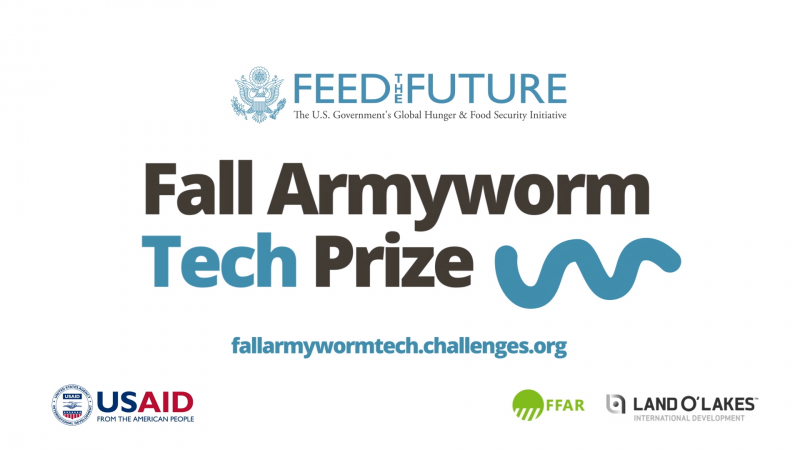Nesta, on behalf of Feed the Future, today announced that 228 applications were received, mostly from Africa, for the global Fall Armyworm Tech Prize. The Prize aims to find digital solutions to identify, track and protect crops from the pest, which has devastated agricultural produce across the continent.
Over 80% of the entries came from Africa. The five countries with the highest number of entries were:
Uganda: 52
Nigeria: 25
USA: 23
Ghana 22
Kenya: 21
Bhavik Doshi, Research and Impact Coordinator for Nesta said they were extremely pleased.
“We are thrilled with this result as it’s a tremendous response. We are also pleased that over 80% of the entries came from across Africa. It indicates that the people of Africa want to find solutions to the fall armyworm threat.”
The armyworm flies nearly 1,000 miles in just 30 hours and can easily migrate to neighbouring countries. The female moth can lay up to a total of 1,000 eggs in her lifetime, and in its larvae stage, can cause significant damage to crops if not managed appropriately. It has a taste for maize but also feeds on more than 80 species of plants including rice, sorghum, millet, sugarcane, vegetable crops and cotton. In sub-Saharan Africa, over 200 million people depend on maize for food security as it is a staple cereal crop grown by farmers.
The Fall Army Worm (FAW) poses a serious threat to Africa’s food security and although there are solutions, the steps to take are different in each region. So far, the infestation, which started in 2016, has resulted in some containment measures being undertaken, but none are long-term or sustainable. Innovation and technology is believed to be crucial to finding solutions that can help mitigate the risk of decreasing food security in Africa. The value of small innovations means that farmers can start tackling the issue before it’s too late.
So far, there has been a substantial amount of information to sift through.
In order to control the spread of the pest, smallholder farmers need improved access to immediate, accurate and actionable information on how to treat and protect their crops.
So far, 51 of the 54 African nations have been affected. Given the rate of outbreak, interventions are needed at a transnational level. Information on how to treat the pest needs to be quickly transmitted to farmers and those who advise them. The problem requires digital tools and approaches that source, analyse and translate data for farmers and relevant stakeholders to make timely and accurate decisions to combat the spread of the armyworm.
Nesta, on behalf of Feed the Future, USAID, Land O’ Lakes International Development (LOL) and the Foundation for Food and Agriculture Research (FFAR) launched the Fall Armyworm Tech Prize looking for tools that can work in different regions across the African continent.
The US Agency for International Development (USAID), together with LOL and FFAR have contributed $400,000 in prize awards, and the winners will have a chance to develop their prototypes and see immediate feedback from smallholder farmers.
Feed the Future works hand in hand with partner countries to develop their agriculture sectors and break the cycle of poverty and hunger. In particular, it hopes to increase agricultural activity, boost harvests and incomes for rural smallholder farmers, generate opportunities for economic growth and trade in developing countries.
USAID’s Digital Inclusion team believes that with advances in digital communications, social networks, satellite imagery, electronic data collection and sharing, sensing technologies, crowdsourcing, and the global movement to share open data, more information than ever can be efficiently communicated and made relevant for farmers. While digital tools are not the only solutions to eradicating the worm, technological solutions can help serve as a force multiplier to an already strained advisory service.

